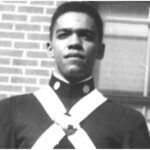Pioneering the Path for Black Theatrics in Chicago
In 1913, Black Chicagoans lined up early to get a good seat at the Pekin Theatre, the city’s first Black-owned theater. Located on 27th and State Street, the Pekin was large enough to hold up to 1,200 people, making it a popular attraction for the Black community.
The Pekin Theatre was founded by Robert T. Motts, an Iowa native and professional gambler who had transformed his hotel/gambling saloon into the city’s first theater catering to Black audiences.
The Pekin, often called the “Temple of Music,” opened its doors on June 18, 1905, showcasing the first all-Black show ever produced in Chicago to an estimated crowd of 400 patrons.
A Trailblazing Venture in Black Theatrics
The Pekin Theatre was a trailblazing venture during a time when all existing theaters in Chicago were white-owned and managed.
Motts had to overcome skeptics who questioned the capabilities of Black management and expected Black theatrical performances to be confined to minstrelsy.
However, the Pekin responded to the 1901 call of Black businessmen for the creation of “a colored theater in Chicago, controlled by colored people, and catering only to colored patronage.”
A Transformation and Rise to Prominence
In early 1906, the Pekin underwent a major transformation, transitioning from a cabaret-style establishment to a first-class bijou theater.
The creation of the Pekin Stock Company shortly thereafter also marked a shift from vaudeville acts to full-length musical comedies.
The theater showcased the talents of notable artists such as J. Ed Green as director and playwright, musicians Will Marion Cook and Joe Jordan, and actors Harrison Stewart, Jerry Wills, Lawrence Chanault, and Abbie Mitchell.
Challenges and the Eventual Demise
Despite the Pekin’s success in recruiting and developing Black theatrical talent, it faced challenges. Critics complained that the theater changed shows too frequently and charged excessive fees for admission.
In 1908, Motts opened a North Side Company at the Columbia Theater in an effort to attract white audiences, but this endeavor proved to be financially disastrous and marked the beginning of the Pekin’s demise.
By 1911, the Pekin Theatre closed its doors, unable to compete with the vaudeville and motion picture theaters that were opening around Chicago.
However, the theater’s legacy remains as the first significant attempt to create a legitimate Black theater in the city, providing African American artists a space to hone their skills and develop the emerging Black theatrical tradition.





